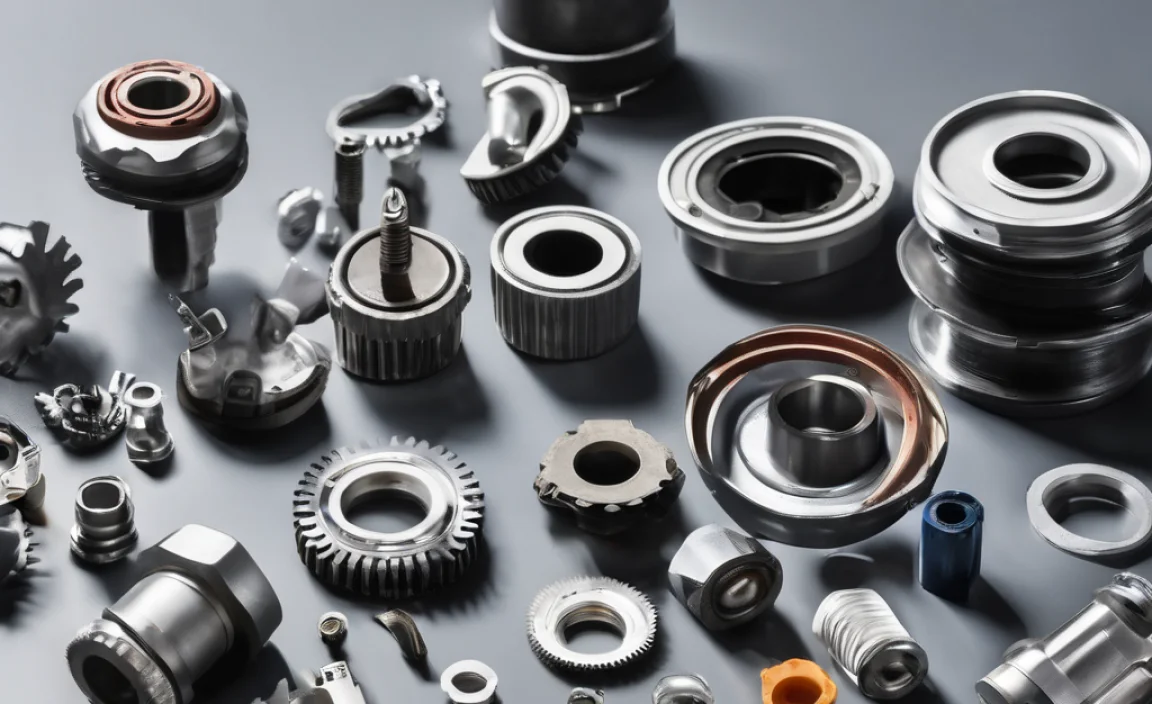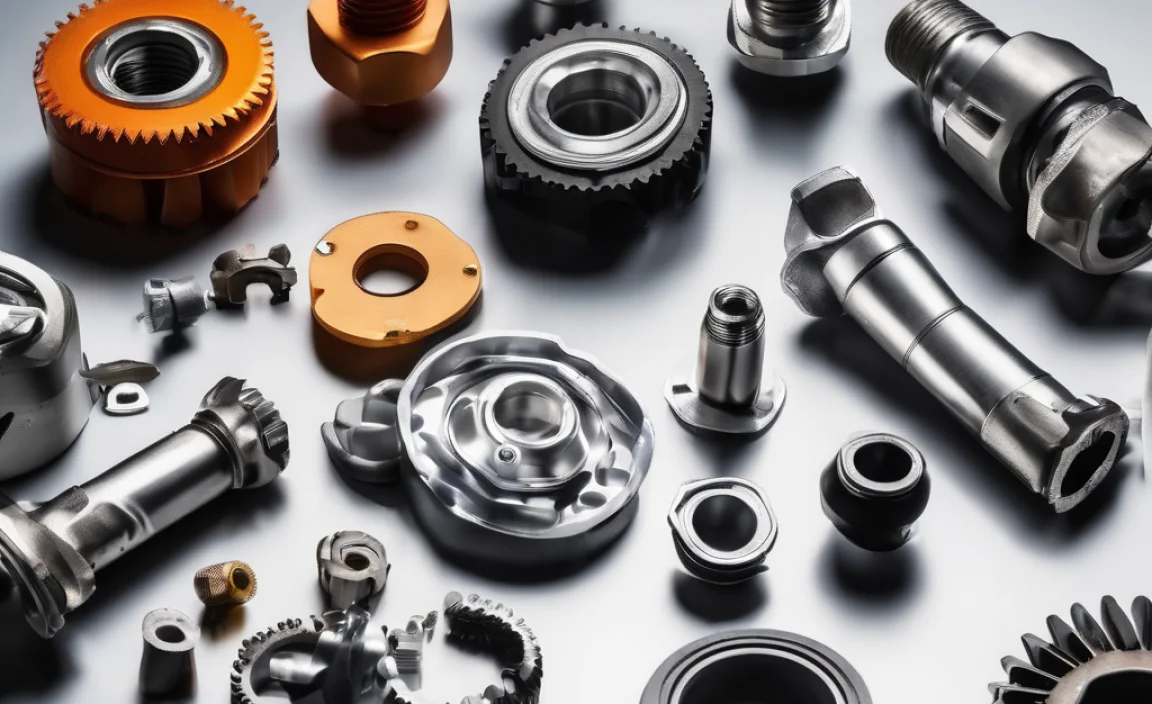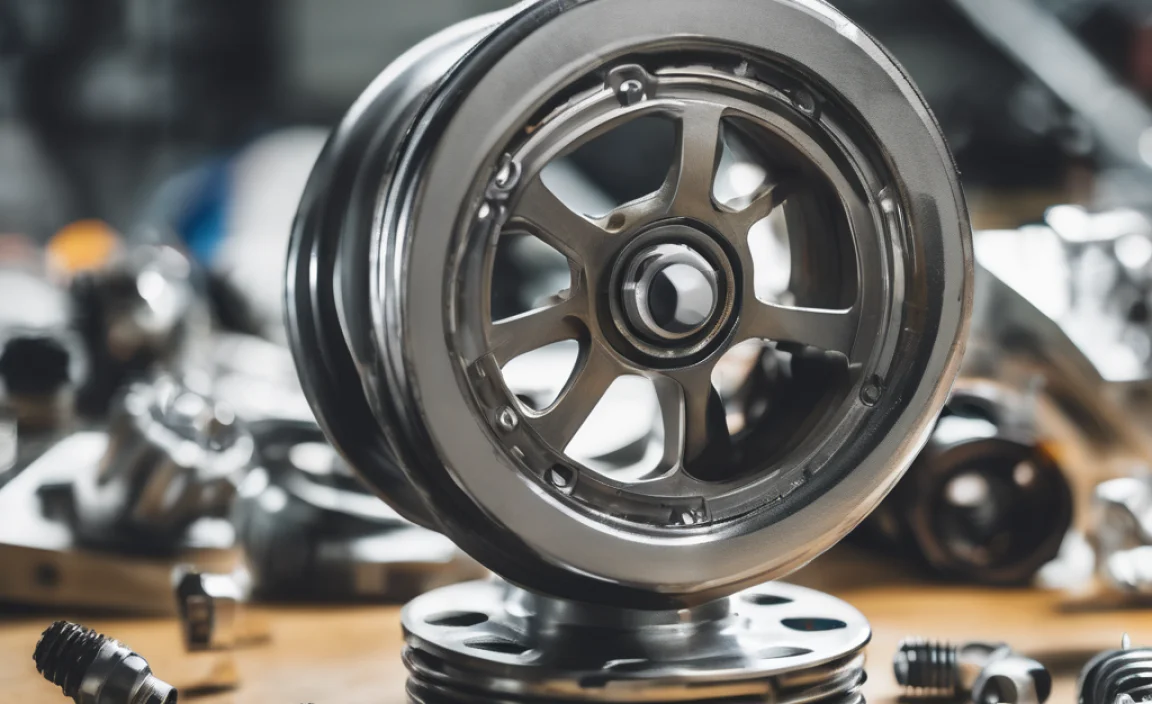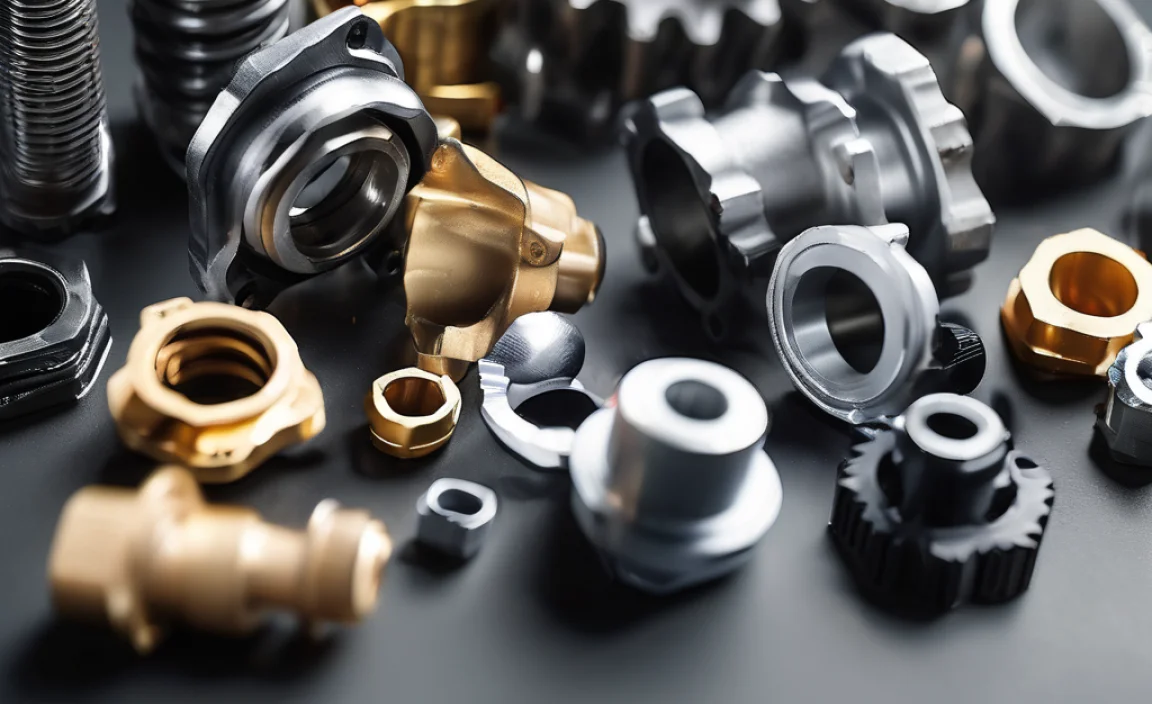The cost to import GLA-Class spare parts can range from 15% to 50% of the part’s price, depending on shipping method, import duties, taxes, and any handling fees. This guide will break down these factors to help you estimate and manage your import expenses effectively.
Having a Mercedes-Benz GLA-Class is a joy, but when a part needs replacing, the thought of sourcing and importing it can seem daunting. You might wonder about the costs involved, especially if the specific part isn’t readily available locally. It’s a common concern for many GLA owners, but don’t worry! This guide is here to simplify everything for you. We’ll walk through where to find parts, what influences the cost, and how to get them without breaking the bank. Let’s demystify the process and get your GLA back in top shape.
Understanding the GLA-Class Spare Parts Landscape

When your GLA-Class needs a new component, you have a few main avenues to explore. Each has its own implications for cost and availability.
OEM vs. Aftermarket Parts
OEM (Original Equipment Manufacturer) Parts: These are parts made by Mercedes-Benz or by the same companies that supply parts to Mercedes-Benz for manufacturing. They are designed specifically for your GLA-Class, ensuring perfect fit and performance, just like the original.
Aftermarket Parts: These are made by companies other than Mercedes-Benz. They can be a more affordable option and are sometimes even of comparable quality to OEM parts. However, it’s crucial to choose reputable brands to ensure they meet the necessary standards.
Where to Source Parts
Local Mercedes-Benz Dealerships: This is your most straightforward option for OEM parts, but often the most expensive.
Independent Mercedes-Benz Specialists: These shops often have access to both OEM and high-quality aftermarket parts and may offer more competitive pricing than dealerships.
Online Retailers (Domestic & International): The internet has opened up a world of possibilities. You can find a vast array of both OEM and aftermarket parts from various online stores. This is where importing often comes into play.
Salvage Yards/Used Parts: For less critical or cosmetic parts, used components can be a very cost-effective solution.
The Anatomy of Import Costs: What Adds Up?

Importing a spare part for your GLA-Class involves more than just the price of the item itself. Several factors contribute to the final landed cost.
1. The Part’s Purchase Price
This is the base cost of the component you’re buying. Prices can vary significantly based on:
Part Rarity: Common wear-and-tear items (like brake pads or filters) are usually readily available and less expensive than specialized components (like a specific sensor or a unique trim piece).
Part Type: Engine parts, body panels, electronic modules, and interior components all have different price points.
Brand and Quality: OEM parts will almost always be more expensive than aftermarket alternatives. Even within aftermarket, premium brands cost more than budget options.
2. Shipping and Handling Fees
This is often one of the largest components of the import cost.
Shipping Method:
Air Freight: Fastest but most expensive. Ideal for urgent repairs.
Sea Freight: Much slower but significantly cheaper. Better for non-urgent parts or larger items.
Express Courier Services (e.g., DHL, FedEx, UPS): These offer a middle ground, often with good tracking and delivery times, but at a premium over standard postal services.
Shipping Weight and Dimensions: Larger and heavier parts will naturally cost more to ship.
Insurance: Protecting your purchase during transit is often recommended, especially for valuable or delicate parts. This adds a small percentage to the total cost.
Handling Fees: The seller or shipping company might charge fees for packaging, processing, or preparing the shipment.
3. Import Duties and Taxes
These are government-imposed charges that vary by country and sometimes by the type of part.
Customs Duties: A percentage of the item’s value, levied by your country’s customs authority. The rate depends on your country’s trade agreements and the Harmonized System (HS) code for the specific part. You can often find HS codes and duty rates on your government’s customs or trade department website. For example, the U.S. International Trade Commission provides Harmonized Tariff Schedule information.
Value Added Tax (VAT) or Goods and Services Tax (GST): Most countries impose a consumption tax on imported goods. This is usually a percentage of the item’s value plus any duties paid.
Other Taxes/Fees: Some countries might have specific import processing fees or other local taxes.
4. Currency Exchange Rates
If you’re buying from a country with a different currency, the prevailing exchange rate will impact the final cost in your local currency. Fluctuations in exchange rates can mean the price you see today might be slightly different tomorrow.
5. Potential Brokerage Fees
If you use a dedicated international shipping company or if the courier handles the customs clearance on your behalf, they may charge a brokerage fee for their services.
Estimating Your GLA-Class Spare Parts Import Cost

Let’s break down how you can estimate these costs.
Step-by-Step Cost Calculation Example
Imagine you need a specific sensor for your GLA-Class, and you find it online from a European supplier.
Scenario:
Part Price: €150
Estimated Shipping Cost (Express Courier): €80
Import Duty Rate: 5% (on Part Price + Shipping)
VAT Rate: 20% (on Part Price + Shipping + Duty)
Exchange Rate: €1 = $1.10 USD
Calculation:
1. Base Cost (Part + Shipping): €150 + €80 = €230
2. Convert to USD: €230 $1.10/€ = $253
3. Calculate Import Duty: 5% of $253 = $12.65
4. Calculate Cost Including Duty: $253 + $12.65 = $265.65
5. Calculate VAT: 20% of $265.65 = $53.13
6. Total Estimated Cost: $265.65 + $53.13 = $318.78
Keep in mind this is an estimate. Actual invoiced amounts might differ slightly due to precise customs valuations, brokerage fees, or exact shipping charges applied by the seller.
Factors Influencing the Total Import Cost

Here’s a table to summarize how different choices affect your budget:
| Factor | Low Cost Impact | High Cost Impact | Notes |
|---|---|---|---|
| Part Type | Common wear items (filters, brake pads) | Specialized electronics, rare body panels | Rarity increases price and urgency. |
| Part Origin | Domestic or nearby countries with trade agreements | Distant continents, countries with high tariffs | Proximity and trade deals save money. |
| Shipping Method | Sea freight, standard postal service | Air freight, express couriers | Speed vs. savings is a key trade-off. |
| Seller Type | Reputable aftermarket retailers, discount OEM suppliers | Official dealerships (for high markups), unverified sellers | Research sellers for value and authenticity. |
| Part Condition | Good condition used parts | Brand new, high-spec OEM parts | Used parts can be cost-effective for older models. |
| Import Duties/Taxes | Countries with low tariffs and tax exemptions (rare) | Countries with high duty rates and steep VAT | Always check your local government regulations. |
Tips for Reducing Import Costs

You don’t always have to pay the premium. Here are some ways to keep your expenses down:
Compare Prices from Multiple Suppliers: Don’t settle for the first option you find. Check different online retailers, both domestic and international, for the best base price.
Consolidate Shipments: If you need multiple parts, ask if the seller can package them together. This can significantly reduce per-item shipping costs.
Opt for Slower Shipping (When Possible): If your GLA-Class isn’t requiring immediate repairs, sea freight or standard postal services are much cheaper than express options.
Understand Import Regulations: Research the import duties and taxes for your country before you buy. Knowing the exact percentages will help you avoid surprises at customs. Websites like the U.S. Customs and Border Protection offer valuable information for importers.
Buy from Countries with Favorable Trade Agreements: If possible, sourcing parts from countries that have free trade agreements with your own can reduce or eliminate duties.
Consider High-Quality Aftermarket Parts: For many components, well-regarded aftermarket brands can offer OEM-equivalent quality at a lower price, even before import costs.
Factor in Total Landed Cost: Always calculate the full cost – part price + shipping + duties + taxes – before deciding. A cheaper part overseas might end up being more expensive once all fees are added.
Commonly Imported GLA-Class Parts
While many parts are standard, some might be more frequently imported depending on your region:
Specialized Engine Components: Unique sensors, specific turbocharger parts, or performance engine upgrades.
Body Panels and Trim: Bumpers, fenders, grilles, or specific exterior trim pieces that may have subtle design differences by market or are less common.
Interior Accessories: Custom floor mats, specific console parts, or unique upholstery pieces not offered locally.
Electronics and Control Modules: Advanced infotainment system components, climate control modules, or certain safety system parts.
Performance or AMG-Specific Parts: Components unique to AMG models or performance packages that might not be standard in all markets.
Navigating Customs and Documentation
When importing parts, clear documentation is key to a smooth process.
Commercial Invoice: This document from the seller details the transaction, including the part description, quantity, unit price, total price, currency, and seller/buyer information.
Bill of Lading or Air Waybill: This is the shipping receipt issued by the carrier.
Proof of Value: Customs may ask for proof of the part’s value, such as bank statements or purchase orders, to ensure duties and taxes are calculated correctly.
Country of Origin Certificate: Sometimes required to determine applicable duties.
If you’re using a reputable international courier, they will often guide you through or handle the customs clearance process for an additional fee. Always ensure the seller provides accurate declarations. Misdeclared goods can lead to delays, fines, or seizure.
When Importing Makes Sense (and When It Doesn’t)
Importing spare parts for your GLA-Class can be a smart move in certain situations:
Reasons to Import:
Part Unavailability: The part simply isn’t sold or stocked in your country.
Significant Cost Savings: Even with import fees, the total landed cost is substantially less than local options.
Access to Specific Models/Trims: You need parts for a variant or AMG model not officially sold where you live.
Unique or Aftermarket Performance Parts: Sourcing specialized tuning or aesthetic parts from their country of origin.
Reasons Not to Import:
Urgent Repair: The time involved in international shipping can be too long for immediate needs. In these cases, a local, perhaps slightly more expensive, part is better.
Minimal Cost Difference: If the savings after calculating all import costs are negligible, it’s often simpler and less risky to buy locally.
High Shipping Costs: For small, relatively inexpensive items, shipping can easily double or triple the cost.
* Uncertainty and Risk: Dealing with unfamiliar international sellers or complex customs procedures can be stressful. If you’re not comfortable, it might be worth paying a bit more for local convenience.
Frequently Asked Questions (FAQ)**Q1: How much do Mercedes-Benz GLA-Class spare parts usually cost to import?
The import cost typically adds 15% to 50% on top of the part’s purchase price. This covers shipping, duties, taxes, and potential handling fees.
Q2: Is it cheaper to buy GLA-Class parts locally or import them?
It depends. If a part is common, local might be cheaper. For rare parts or specific deals, importing can save money, but always factor in all associated costs.
Q3: What are the biggest factors determining import costs?
Shipping method (air vs. sea), import duties and taxes specific to your country, and the part’s original price and size all significantly impact the final cost.
Q4: Can I avoid import duties and taxes?
Generally, no. Most countries levy duties and taxes on imported goods. Some trade agreements may reduce these, but they are rarely eliminated entirely.
Q5: How long does it typically take to import a spare part?
Shipping times vary widely. Express couriers might take 3-7 days, while sea freight can take several weeks to months. Customs processing also adds time.
Q6: What happens if the imported part is damaged or incorrect?
This can be challenging. It depends on the seller’s return policy and the shipping insurance. Always buy from reputable sellers with clear return processes, and consider insuring your shipment.
Q7: Where is the best place to buy imported GLA-Class parts?
Reputable online retailers specializing in European car parts, official Mercedes-Benz parts distributors who ship internationally, and trusted international marketplaces (like eBay, but with careful seller vetting) are good starting points.
Conclusion
Sourcing and importing spare parts for your Mercedes-Benz GLA-Class doesn’t have to be a mystery. While the “GLA-Class spare parts import cost” can seem intimidating, understanding the various components – from the part price and shipping method to government duties and taxes – empowers you to make informed decisions. By comparing suppliers, choosing the right shipping services, researching local import regulations, and always calculating the total landed cost, you can successfully acquire the parts you need. Whether you’re seeking an elusive OEM component or a specific aftermarket upgrade, this guide equips you with the knowledge to navigate the process confidently and keep your GLA-Class running smoothly. Happy motoring!